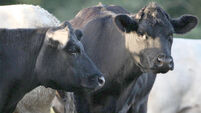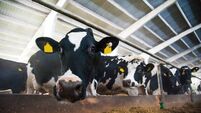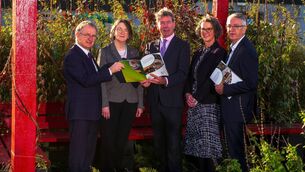Prices held up as cattle off-loaded from wet fields
With upwards of 2.5 times the normal rainfall in some places in the first three weeks of the month, the difficulties for the farming community are by now legion. However, 2012 may also be remembered as the year that the buoyancy in the cattle trade offered farmers real and profitable options as they navigated their way through the problems posed by the poor weather.
An example of these options was evident at Bandon mart last Monday, with Tom McCarthy revealing that their sale of 320 cattle was an increase of nearly 100% on the same week last year.













